Webinar
Migratory Birds in the West/Yellow Sea
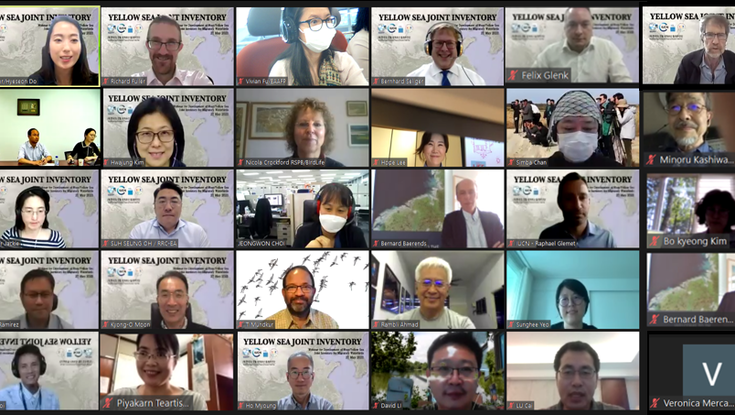
The coast of Northeast Asia, called the West Sea or the Yellow Sea, is shared by the Republic of Korea (RoK), Democratic People’s Republic of Korea (DPRK), and the People’s Republic of China (PRC) and is also the section where the largest number of migratory birds stop by in the East Asian-Australian Flyway (EAAF) migration route. West/Yellow Sea is the largest area of the intertidal flats on the planet and provides vital ecosystem services including fisheries, disaster risk reduction, blue carbon storage, and climate change resilience. However, the degradation and reclamation of Northeast Asian countries have caused more than 60% of wetlands to disappear over the past 50 years, and the number of natural resources and migratory birds in the West/Yellow Sea has drastically decreased over the past 40 years. Because these problems can affect the three countries’ coastal dependence on livelihoods, successful management and preservation through coordination and information sharing between countries are paramount.
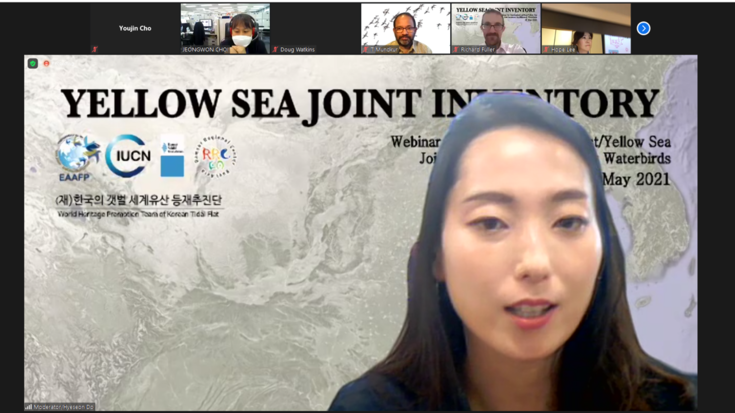
The webinar was moderated by Hyeseon Do, Programme Officer at the EAAFP Secretariat. The purpose of the webinar was to develop a mutual understanding among appropriate researchers and government officers in the three countries of the West/Yellow Sea regarding the potential development of a joint inventory mechanism and platform, to review existing data and possible activities to work toward a harmonized inventory for migratory waterbirds, to compile a comprehensive assessment of the status of migratory and breeding birds in the West/Yellow Sea and to strengthen the links between the government agencies responsible for with the researchers, civil societies and the working group. The keynote speech was chaired by Professor Richard Fuller of the University of Queensland. He shared the migratory bird conservation status and national statistics, future plans, and monitoring approaches.
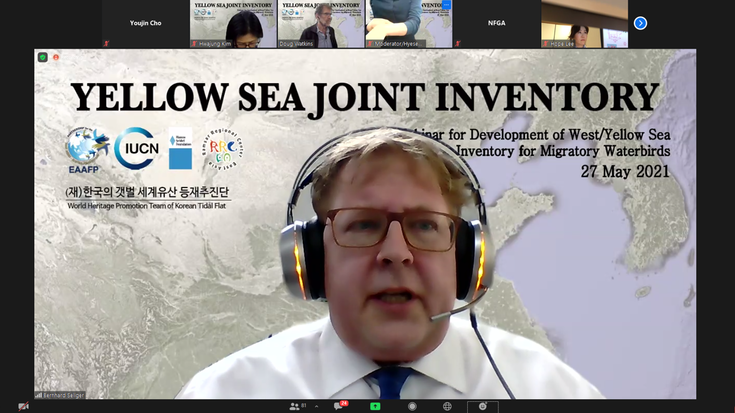
After that, experts shared insights about the conservation status for migratory birds and introduced monitoring approaches in the countries bordering the West / Yellow Sea. Dr. Kim Hwa Jeong from the Ministry of Environment and Ms. Lee Gusung of the Ministry of Ocean and Fisheries introduced RoK’s efforts and Dr. Zeng Qing of the Beijing Forestry University shares the status quo of PRC. Dr. Bernhard Seliger, the representative of Hanns Seidel Foundation Korea, shared insights about North Korea’s migratory bird conservation status and monitoring methods in North Korea. Wetlands, migratory birds and their habitat a severely affected by expansive development and land reclamation projects in the West/Yellow Sea. Therefore, the importance of North Korea’s wetlands and the necessity of the North Korean government’s cooperation with the international community is even more significant. Dr. Seliger specifically stressed the support of capacity building and awareness raising regarding the conservation of migratory birds and wetlands in North Korea.
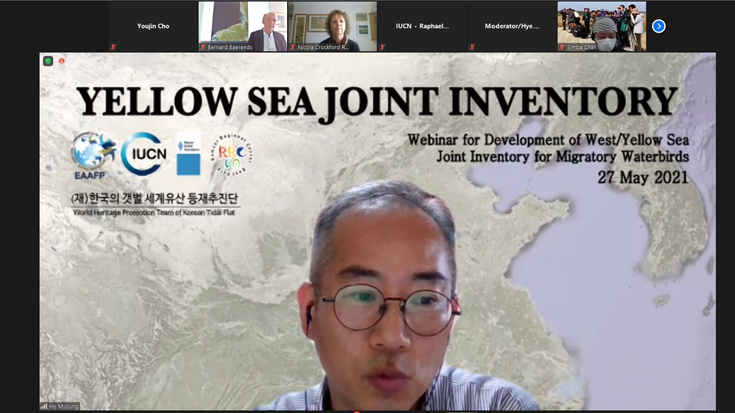
During the panel discussion, Bernard Baerends, Executive Secretary of Common Wadden Sea Secretariat, Nicola Crockford, International Species Policy Officer at the Birdlife international, Jimmy Choi, Research Assistant Professor at Southern University of Science and Technology and Myoun Ho, Vice President for Eco-Horizon Institute talked about joint monitoring and road map development. Experts all agreed that efforts of volunteers from the private sector to identify bird populations are more important than anything to monitor migratory birds. Furthermore, a roadmap for joint management of coastal wetlands in the Korean peninsula and PRC and an internationally coordinated monitoring system are needed. They stressed that current effort from the private sector should be expanded throughout the West/Yellow Sea in order to actively participate in practical work.
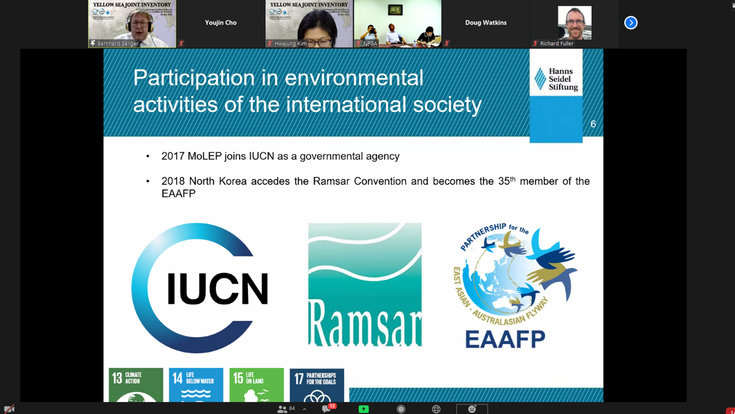
Finally, working group officials talked about inter-cooperation for the conservation of migratory waterbirds and their habitat in the West/Yellow Sea through the series of World Heritage nominations. Dr. Moon Kyong-O, Secretary General of Korea Getbol World Heritage Promotion team, explained the Getbol, a Korean tidal flat, which will soon be listed as World Heritage sites, and shared the importance and future of Getbol. Doug Watkins, Chief Executive EAAFP Secretariat had a closing remark vowing to work until the day the three countries, RoK, DRPK, and PRC joined forces, as did international cooperation in the Wadden Sea in the past.
